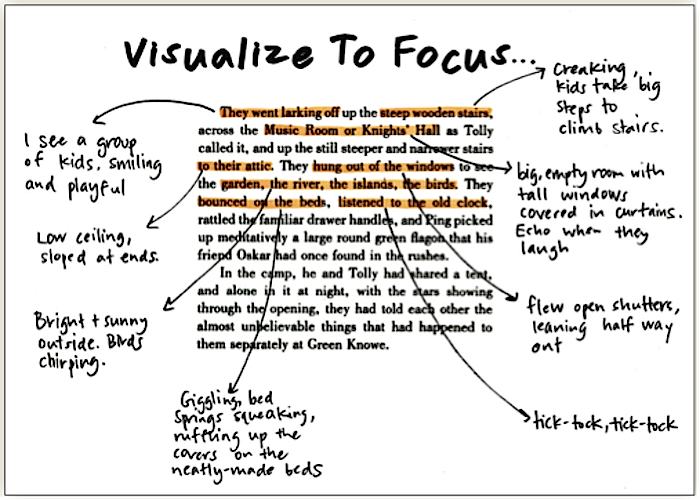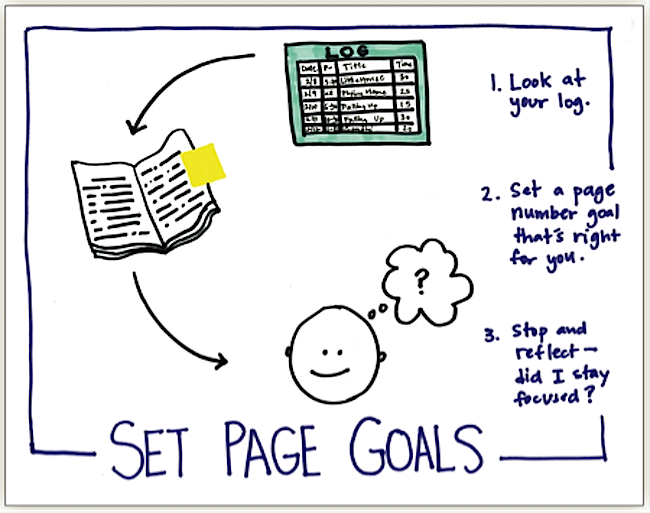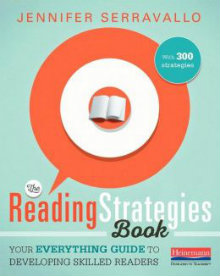Expanding Our Approach to Reading Strategies
Guest contributor Jennifer Serravallo knows reading. A former NYC public school teacher and the author of several books on literacy instruction, she worked for eight years as a staff developer and national consultant at the Teachers College Reading and Writing Project at Columbia University.

If I said, “Name all the reading strategies you can,” how would you answer?
Many might list seven terms often associated with comprehension: activating prior knowledge, determining importance, visualizing, synthesizing/retelling, monitoring for meaning, questioning, and inferring.
To me, a strategy is never a single word or phrase – it’s a series of actionable steps, a process to help readers tackle a skill that is not yet automatic for them.
I also think strategies expand beyond comprehension into other areas of reading such as decoding, reading with fluency, developing stamina and engagement, writing about reading, and conversing about texts.
Strategies Help a Learner Become Skilled

For example, when I was teaching my daughter Lola how to tie her first pair of sneakers with laces, we tried the following: 1. Make a loop with one lace; 2. Circle the other lace around the loop; 3. Tuck the second loop under the circle, 4. Pull tight.
Another parent might have taught the one where you make two bunny ears, cross them like an “x,” stick one underneath the other and pull tight strategy. I saw on You Tube another way – to make a “x” and then an “x” again, and then tuck the ends of the strings in the space in between the two “x”s.
Any one of these strategies gets you to the skill. But what really matters? That you can tie your shoes. One day Lola should be able to tie her shoes while talking to a friend at the playground, focused more on her conversation than the shoe-tying.
The path to automaticity
What does any of this have to do with reading? For readers, I think it’s helpful to go a step beyond saying “You should visualize when you read” to saying, “When you are reading a story, imagine yourself to be in the place. Use your senses to experience the world of the story. Describe what you see, hear, smell, feel.”
The latter example, for someone who isn’t yet able to visualize, is much clearer and makes the visualization doable. Eventually what we want, of course, is automaticity with visualization. After practice, the step by step how-to should fade into the background and the skilled performance remains.

Strategies for More than Comprehension
Reading is complex and multi-faceted. Depending on the reader, one of a number of goals may emerge as most important. While some students may need support with one area of comprehension or another, still others will be working on being able to decode the print or read the text with fluency, while still others are working on their ability to stay focused and engaged during reading. Strategies can help here, too.
For example, instead of saying to a reader to “read for the whole 30 minutes without getting distracted,” we may find it helpful to explain to them how to do that. For example, I might tell a reader to, “Set page goals in your book by reflecting on your log. Mark your brief stops with sticky notes. When you read and get to a sticky note, stop and think if you were focused or distracted. Decide to read on, or re-read.”

Taking it to the Classroom
Strategies are at the core of everything I do when teaching reading. When I have students gathered for the whole class lesson, I make sure to not just demonstrate but to also articulate a strategy, making clear how I did what I’m demonstrating. When I pull children into a small group, I’ll often form the group based on a strategy they could all use, rather than based on their book or a reading level.
And when I meet with students one-on-one in conferences, I do more than just talk to them about their book; I support them with their individual reading goal by introducing and helping them to practice a strategy.
How do these ideas compare with your use of strategies in your classroom?






































I worked with Jennifer Seravallo as Senior Reading Advisor to the Teachers College Reading and Writing Project from 2003-2010. Jen is an amazing individual that has spent many days and hours working with students and teachers. Her suggestions are grounded in teaching experience and collaboration with colleagues and mentors. I highly recommend her writings and those educators who are able to work with her in person are truly blessed. You go girl!!!!